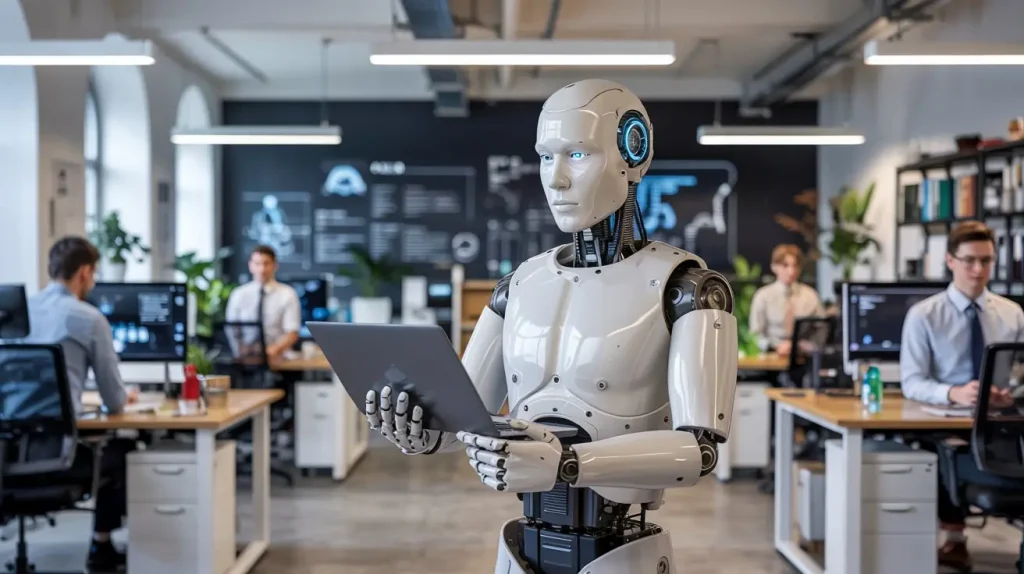Equinix to build £3.9bn Hertfordshire data centre
Equinix plans to invest £3.9 billion in the project, which will deliver 250+MW of compute
The AI taking over job roles has shifted from speculative fear to tangible reality, with 41% of companies globally planning workforce reductions as automation accelerates¹. Unlike historical automation waves that targeted factory workers, today’s AI systems threaten lawyers, marketers, and financial analysts—roles once deemed immune to technological displacement⁴. This transition has sparked debates about economic stability and the ethical responsibilities of corporations and governments.

Goldman Sachs estimates AI could replace 300 million jobs by 2030, with administrative (46%), legal (44%), and architecture roles (37%) most exposed³. In the U.S., 14% of workers have already been displaced by AI, while 30% fear replacement by 2025⁵. Key sectors facing disruption include:
McKinsey warns that women and people of color are disproportionately affected, as they hold 68% of administrative and service roles targeted for automation⁶.

AI’s capabilities now extend beyond manual tasks to cognitive and creative work:
Goldman Sachs notes AI taking over could create roles in ethics and prompt engineering, boosting global GDP by $7 trillion³.

Finance
AI-driven risk assessment tools process loan applications 40% faster, but banks like Bank of America have expanded AI ethics teams by 200% to address bias concerns⁶.
Retail
Walmart’s inventory management AI reduced overstock costs by $1.2 billion by predicting regional demand shifts, though store staffing dropped 10%⁷.
Tech
Meta cut 5% of its workforce to prioritize AI development, while Microsoft trained 150,000 employees in AI ethics and tool management by 2024⁸.
Media Industry
Axios reported in 2023 that AI tools like Jasper draft articles, reducing junior writers’ workloads. This led to a 15% decline in freelance contracts at Condé Nast by 2024⁴.
Manufacturing
Tesla’s Berlin factory uses AI-guided robots for battery assembly, doubling output while cutting labor costs by 45%⁷.
Telecommunications
Verizon’s AI resolves 65% of billing inquiries autonomously, though the company created 800 new roles in AI training and ethics compliance⁶.

Reskilling Initiatives
Policy and Ethics

The AI taking over jobs narrative reflects both legitimate fears and transformative potential. While automation threatens 300 million roles, it also unlocks productivity gains and new industries—from AI ethics to hybrid healthcare roles. The path forward hinges on reskilling programs, equitable policies, and corporate transparency. As the BBC’s Torsten Bell notes, predictions remain uncertain, but proactive adaptation can turn disruption into opportunity⁴.
Citations
Please note, that the author may have used some AI technology to create the content on this website. But please remember, this is a general disclaimer: the author can’t take the blame for any mistakes or missing info. All the content is aimed to be helpful and informative, but it’s provided ‘as is’ with no promises of being complete, accurate, or current. For more details and the full scope of this disclaimer, check out the disclaimer page on the website.
The post The Real Reason People Are Nervous About AI Taking Over Jobs appeared first on AI GPT Journal.
Author: Jim Malervy - This post was originally published on this siteEquinix plans to invest £3.9 billion in the project, which will deliver 250+MW of compute
Key takeaways What Is Imagine Lens—and Why It Matters Snapchat’s Imagine Lens lets us create…
Packages downloaded from NPM can fetch dependancies from untrusted sites.
Exclusive Edge, Atlas, Brave among those affected
A critical, currently unpatched bug
The announcement brings Amazon’s total pledged investment in South Korea to $9 billion over the